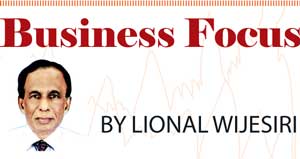18 Jul 2016 - {{hitsCtrl.values.hits}}
 What can a customer do when he or she is dissatisfied with a product or a service’s performance? While there are many alternative actions that can result from dissatisfaction, the most common customer responses are logical. Many customers simply do nothing. They take no action and tell no other people, particularly if the purchase is of little value monetarily or psychologically. As the investment in the purchase or the product increases, customers who are dissatisfied may vow to avoid the product and company in the future, or they may begin to talk to others. If engaging in negative word-of-mouth behaviour is insufficient, dissatisfied customers may seek redress from the company, return the product, or complain to regulatory agencies or the media.
What can a customer do when he or she is dissatisfied with a product or a service’s performance? While there are many alternative actions that can result from dissatisfaction, the most common customer responses are logical. Many customers simply do nothing. They take no action and tell no other people, particularly if the purchase is of little value monetarily or psychologically. As the investment in the purchase or the product increases, customers who are dissatisfied may vow to avoid the product and company in the future, or they may begin to talk to others. If engaging in negative word-of-mouth behaviour is insufficient, dissatisfied customers may seek redress from the company, return the product, or complain to regulatory agencies or the media.

There are several factors that influence a customer’s decision to complain. These factors include the level of dissatisfaction, attribution of blame, cost/benefits of actions and personal characteristics.
Dissatisfaction
There are degrees or levels of dissatisfaction that can conceivably range from a mild displeasure to raging anger. If the difference between performance and expectations was not great, customers may not be greatly troubled by their dissatisfaction. However, if the purchase was important or if the situation associated with the use of the product was significant and the customer is greatly disappointed, the likelihood of complaining increases.
Attribution
This theory holds that people look for explanations for events and occurrences that they experience. “Why did this occur?” they ask. Customers can attribute poor product performance to themselves or they can say, it’s not my fault, and attribute the problem to an external source. If they blame the manufacturer or the store where the purchase was made, they are more likely to complain. Customers also make attributions about the company’s likelihood to repeat poor performance or to respond to a compliant.
Cost/benefits of actions
Dissatisfied customers are more likely to complain when cost/benefit perception is unfavourable when the expected benefits of complaining are high and the expected costs are low. If an airline has a ‘Contact Us’ feature on its website, the cost of registering a complaint may be perceived as relatively low. If the customer expects that he or she will receive a free airline ticket or discount on next ticket by registering the complaint, the likelihood of complaining is quite high.
Personal characteristics
Personal characteristics are the demographic and personality characteristics of the customer base. Research shows that highly educated people are more likely to complain. Self-confident individuals and aggressive individuals have also been found to be more likely to complain. Anecdotal evidence suggests that older women may be more likely to express dissatisfaction with service than their younger counterparts.
Despite the reasons for dissatisfaction or complaints, the key issue for the company and for the customer relationship management (CRM) system is determining the appropriate response to a host of varying circumstances.
What to do when customers complain
When customers complain, the company should have a system in place that will enable to do several things. Beginning with preplanning, the company should be customer-centric as they develop an approach that will (1) express regret, (2) resolve the conflict and (3) follow-up the situation to assure it will never happen again.
Be customer-centric
First and foremost, the representative should listen carefully and let the customer know that he or she has been understood. Listening attentively and displaying sensitivity to the customer’s position conveys a respect and communicates the message that the company is customer-centric. One customer-centric approach is to rephrase the customer’s statements, for example, “If I understand you correctly, you are saying that the product is not functioning properly.”
Asking the question: “What can we do to put matters right?” is a potent means to understanding the customer’s opinion. Asking a question like this can discover if the company built expectations too high. It certainly establishes what the customer’s expectations were.
Express regret
A simple apology can go a long way. Just saying, “I am truly sorry this problem occurred,” may turn an angry customer into an appeased one. A gesture of appreciation or an upgrade of service will reinforce the apology. A waitress may say, “We are sorry you had to wait so long for a table. We would like you to enjoy a complementary dessert because we appreciate your patience.”
Resolve conflict
Expressing regret and making amends is certainly appropriate when the company is clearly wrong, but what should occur when the situation is not as obvious? In some circumstances the customer attributes the blame to the company, but the company attributes the blame to the customer. This situation is characterized by conflict.
One outcome of conflict may be that the customer unilaterally chooses to end the relationship. However, from the company’s perspective, there are several ways to resolve conflict.
Accommodation
When the customer is more important than the issue under dispute, accommodation can be a goodwill gesture. It increases the customer’s commitment to the relationship. A good CRM identifies the complaining customer’s value to the company. There may be a standard answer given to the typical customer. Suppose an online hotel booking service gets a call from a customer who says he arrived at a hotel and the hotel had no reservation. The customer service representative, who has had a CRM system identify the customer, and may provide a free room in a close by hotel. Delighting customers with surprises can turn themselves into advocates who tell their friends, relatives and associates about their experience.
Compromise
This is an attempt to find a mutually acceptable middle ground that is somewhat satisfactory to both parties. Mutually beneficial compromises usually involve careful negotiations. For example, one week after the purchase of a new car, a sensor failed to work. When the repair was complete, the service manager stated, that’ll be Rs.12,000.00. The customer thought this was under warranty. The representative said, “Well, there’s Rs.5,000.00 deductible on all warranty work.” The compromise was for the customer to pay Rs.2000.00 and for the company to prevent an onslaught of negative word-of-mouth from occurring.
Termination
This occurs when the company or the customer ends the relationship and sees no hope of resolving the conflict. For example, a non-regular customer arrives at the veterinarian’s office with a dog who is so covered in fleas that the dog dies before the veterinarian can take action. The customer proceeds to yell and scream at employees and other customers in the waiting room. For the veterinarian, asking that customer to leave is a viable option. Some customers need to patronize competitive companies.
Follow-up and prevent recurrence
It does not do much good to apologize to a customer for a problem that will reoccur in a few weeks. Preventing recurrence is essential for customer retention. The company must deal with every legitimate problem and provide a means of incorporating the information into the CRM system and into the minds of customer care employees.
Shortly after the problem has been resolved, it is a good idea to learn if the solution was acceptable. An automated follow-up might be for the CRM system to send a short satisfaction survey a month (or other appropriate period) after the incident. In business-to-business situations, a telephone call is a simple way to follow up.
There are many alternatives, but the outcome should be the same: The feedback should indicate whether or not the customer’s problem has been resolved. The customers who complain experience a hassle-free resolution process and are given a reasonable solution to their problems are likely to be among a company’s most loyal future customers. Resolving conflict especially brings unexpected positive outcomes and is an effective way to create loyal customer advocates.
(Lionel Wijesiri, a corporate director with over 25 years’ senior managerial experience, can be contacted at [email protected])
10 Jan 2025 2 hours ago
10 Jan 2025 2 hours ago
10 Jan 2025 3 hours ago
10 Jan 2025 4 hours ago
10 Jan 2025 4 hours ago